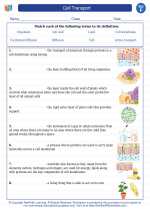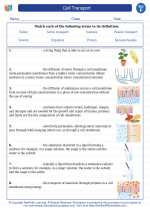Spinal Cord
The spinal cord is a long, thin, tubular bundle of nervous tissue and support cells that extends from the brain down the back. It is a vital part of the central nervous system, serving as the main pathway for transmitting information between the brain and the rest of the body. The spinal cord is protected by the vertebrae of the spine and surrounded by cerebrospinal fluid, which provides cushioning and support.
Structure of the Spinal Cord
The spinal cord is divided into different regions, each of which is responsible for carrying out specific functions. These regions include:
- Cervical region (C1-C8): Controls the functions of the upper body, including the neck, shoulders, arms, and hands.
- Thoracic region (T1-T12): Manages the functions of the chest, abdomen, and back.
- Lumbar region (L1-L5): Responsible for the lower back, hips, and legs.
- Sacral region (S1-S5): Controls the lower back, pelvis, and lower extremities.
Functions of the Spinal Cord
The spinal cord plays a critical role in relaying signals between the brain and the body. It is responsible for:
- Sensory function: Transmitting sensory information from the body to the brain, allowing us to perceive sensations such as touch, pressure, pain, and temperature.
- Motor function: Sending signals from the brain to the muscles and glands, enabling voluntary and involuntary movements and bodily functions.
- Reflexes: Coordinating automatic responses to stimuli, such as quickly withdrawing a hand from a hot surface.
Study Guide for Spinal Cord
- What is the main function of the spinal cord in the central nervous system?
- Describe the structure of the spinal cord, including its regions and their respective functions.
- Explain the role of the spinal cord in sensory and motor functions.
- Discuss the importance of reflexes and how the spinal cord is involved in coordinating reflex actions.
- Research and present a case study or example of an injury or disorder related to the spinal cord, and its impact on an individual's functioning.
◂Science Worksheets and Study Guides Sixth Grade. Cell Transport
Worksheet/Answer key Cell Transport
Cell Transport  Worksheet/Answer key
Worksheet/Answer key Cell Transport
Cell Transport  Vocabulary/Answer key
Vocabulary/Answer key Cell Transport
Cell Transport  Vocabulary/Answer key
Vocabulary/Answer key Cell Transport
Cell Transport 

 Worksheet/Answer key
Worksheet/Answer key
 Vocabulary/Answer key
Vocabulary/Answer key
 Vocabulary/Answer key
Vocabulary/Answer key

The resources above cover the following skills:
Reading Standards for Literacy in Science and Technical Subjects
Craft and Structure
Determine the meaning of symbols, key terms, and other domain-specific words and phrases as they are used in a specific scientific or technical context relevant to grades 6-8 texts and topics.